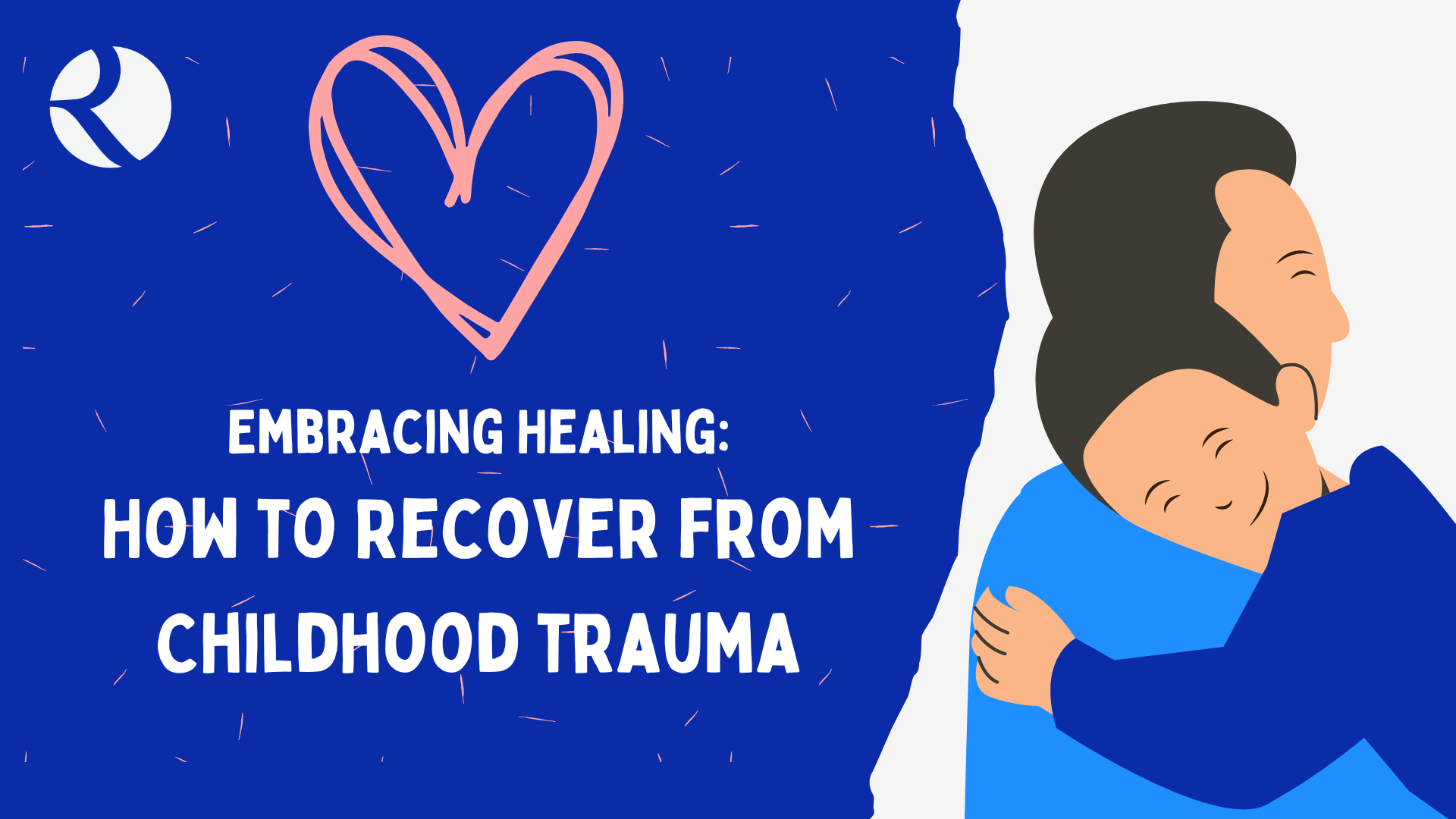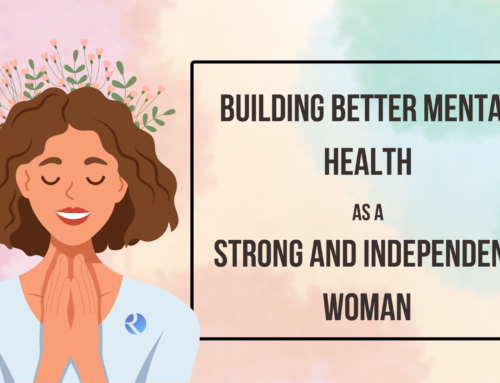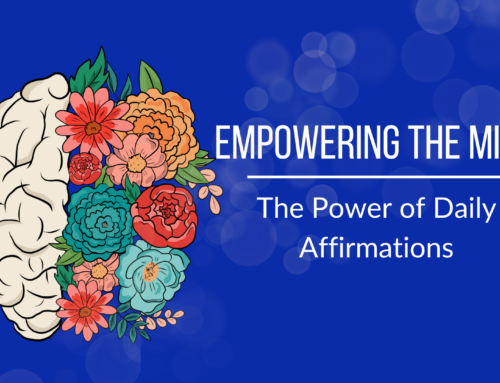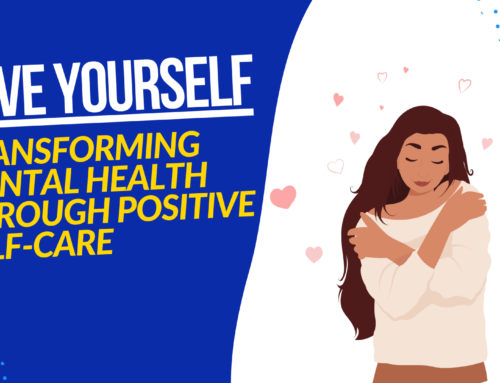
I can’t recall how many times I’ve watched my favorite movie, Eternal Sunshine of the Spotless Mind. It’s a beautiful love story of a couple who undergo a procedure to erase their memories of each other after their relationship turns sour, only to keep coming back to each other’s arms. Yes, I love a good romance movie, and this one stands out for its unique twists, but I can’t help but wonder if what truly draws me (and many others) to such stories is the way it makes me contemplate the fantasy of erasing our painful pasts.
If you’re struggling with childhood trauma, you might understand this feeling all too well. Childhood should be a beautiful time of exploration and discovery, but unfortunately, childhood can also be an emotionally confusing time for some people. It exposes our vulnerabilities and confuses us about what’s right or wrong. It was the moment we first experienced pain, fear, and disappointment. Even if it seems like a distant memory now, a distressing moment from childhood can certainly shape how we react to situations as adults.
Despite the advancement of technology nowadays, the movie’s “memory erasing” technology still remains fictional. Yet if it was available in the real world today, I’m certain people would be willing to pay whatever price necessary just for a chance to experience it. Because for some, holding on to the hurtful memories of the past feels unbearable.
While there’s no easy way to fix or remove our painful memories like in the movie, it is possible to recover from them and use them as a beacon of hope, a testament to our resilience, and a reminder of the unbreakable spirit that lies within each of us. These experiences can undeniably be harrowing and painful, but it is precisely by embracing the impact they have had on us that we can emerge as emotionally agile and strong individuals. Facing these traumas helps us develop a profound resilience that allows us to navigate the complexities of life.
In this article, we will delve into the power of healing and transformation that can arise from acknowledging and confronting our painful memories. Together, let us embrace growth and recovery as we courageously face our traumas, overcome our fears, and embark on a transformative journey towards healing.
What Does a Childhood Trauma Look Like
Trauma’s manifestations are not always black and white. While some people may experience obvious and severe forms of trauma, like physical abuse or bullying, others may experience more subtle forms that can easily be missed. However, even these seemingly insignificant experiences can leave a lasting impact on our mental and emotional health.
For instance, most adults can probably recall at least one instance of neglect from their childhood. This may be caused by a loss or generally just emotionally absent caregivers. It depends on how the child experienced it, but it could be traumatic that it might cause them to have difficulty trusting others.
On the contrary, even the most loving and dedicated parents or caregivers can still cause unintentional harm. For instance, if they try to shield their child from life’s dangers by keeping them in a protective bubble, they may inadvertently raise them to become excessively anxious and hesitant when confronted with challenging situations.
Similarly, parents who avoid letting their kids cry out of fear of upsetting them risk stifling their child’s ability to process their feelings in the long run. As a result, they might easily associate all emotions with fear or discomfort if they don’t learn to process their full range of feelings.
rREST recognizes these as “small-t Traumas.” During childhood and adolescence we all experience difficult and challenging situations. “Small-t Traumas” are those experiences that can, and often do, leave a lasting impact, but don’t necessarily involve extremely difficult situations. Examples of these can be a parent repeatedly speaking to you harshly, feeling excluded from a social group at school, or your sibling being mean-spirited and unkind.
Therefore, we believe that everyone will encounter some form of trauma in one way or another. Pain, fear, disappointment, and other unpleasant experiences are inevitable, and no one is entirely shielded from them. It is how we address and cope with these experiences that makes the difference in shaping us into who we are today.
How to Address These Traumas
When the trauma first occurs, it’s a common response for people to want to forget unpleasant memories that cause them distress. For example, someone who experienced a traumatic car accident may refuse to recall the details of the incident as a way of coping with the emotional pain. While this approach doesn’t erase the trauma entirely, it provides temporary relief from the overwhelming feelings of anxiety and fear associated with the event.
However, simply avoiding things that cause us pain and fear won’t provide a lasting solution to the underlying issues. The pain points will continue to exist until we confront them head-on. Ignorance does not always equate to bliss, and when we make a conscious effort to hide or forget our memories, we prevent ourselves from fully experiencing and processing our emotions.
And once we try to suppress these emotions, they become fragments of memories played in our minds like a blurry picture that our body tries to make sense of. Unconsciously, they influence the way we think, behave, and act which may lead to different issues such as anxiety, depression, and even physical ailments.
With this in mind, if I were to break down the complex steps of healing from trauma, I would split them into three phases: recognizing our trauma, releasing our trapped emotions, and realizing that the trauma does not define us.
Recognize your Trauma
Recalling our traumatic experiences can be daunting. It’s understandable to feel scared, overwhelmed, and even ashamed when revisiting painful memories. But to effectively address our issues, we must first recognize that they exist. It’s important to be honest with ourselves, and acknowledge our experiences so we can learn how to process them in a healthy way.
By taking a closer look, we may recognize patterns in our behavior that go beyond mere chance and start to unravel the threads of our childhood experiences. It takes time and effort, but sometimes understanding ourselves better requires us to step into the shadows of our forgotten memories and acknowledge how these moments have helped shape the path we take today.
Release the Trapped Emotions
This journey to recovery from traumatic experiences can be further weighed down by the built-up trapped emotions that keep us stuck in an identity of a false self. Donald Winnicott’s theory of false self explains how the development of this identity can be used as a coping mechanism against the pain and traumas we experience in our lives.
False self is a way of protecting the inner self, and it is used as a defense against familiar harsh environments. By putting on this facade, we attempt to create a version of ourselves that is more socially acceptable and less vulnerable to harm. As a result, we may become detached from our true selves, leading to a feeling of disconnection and a sense of living a life that is not fully our own.
Releasing these trapped emotions can help us unveil our genuine selves that may have been buried beneath judgment or fear. Through this process of self-discovery, we can also develop a deeper sense of self-awareness and self-acceptance.
Realize that Trauma doesn’t Define You
When you start to uncover your emotions and motivations and gain a deeper understanding of who you are, you will soon realize that your trauma and identity are not one and the same.
Our trauma is part of our story, but it doesn’t have to define our entire narrative. Because what really defines us is our will to survive, even when everything around us seems broken. It is our courage to seek help and to find ways to heal.
Once we realize this, the power trauma holds over us will slowly start to diminish and we’ll be able to move forward with newfound hope and strength.
The Role of Therapy and Counseling

While you now have an understanding of three essential steps to process your trauma, it’s also understandable that doing these things can be easier said than done. Healing from trauma is a complex and challenging process that requires time, patience, and guidance. And it’s important to keep in mind that these processes are best done with the help of a trusted professional.
A trained therapist can offer a safe and supportive environment to process your experiences and develop healthy coping strategies. Since all our experiences are unique, there’s no one-size-fits-all approach. A therapist, however, can provide personalized guidance and support tailored to your own needs and circumstances.
Through different types of treatments, like cognitive behavior therapy, psychodynamic therapy, or exposure therapy, therapists are able to assist in identifying unhealthy patterns and guide you toward new coping mechanisms.
Because trauma can be a complex thing, it is crucial to seek a specialist. At rREST, our passion lies in uncovering and healing the wounds left by painful experiences. We believe that our triggers often stem from a single, deeply-rooted event. iJust like a persistent weed, they will continue to fester and grow until they are removed at their root. With the rREST technique, we can help you pull out these weeds and gently help you to confront the core of your traumas. We stand beside you as you and are there to help guide you towards your healing.
Self-Care Strategies
Healing from childhood trauma is a journey of ups and downs, and it requires courage, patience, and commitment to work through the challenges and lapses that may arise along the way. And during the days when support may not be available, it’s helpful that we learn techniques to better manage our own emotions.
Practicing Self-Compassion
Self-compassion deals with realigning our thoughts about our own identity and emotions and validating that what we feel should not be approached with guilt or shame. Practicing self-compassion can help us cope with the struggles of reliving our traumas, to feel our feelings, and to expose ourselves to emotions we once thought terrifying.
There are ways to apply self-compassion, such as using positive affirmations, mindfulness, and visualization techniques to help us accept our feelings. We can also practice deep breathing exercises that promote relaxation, as well as treat ourselves with kindness by engaging in activities or hobbies that bring us joy.
One great meditation technique you can try is Ho’oponopono. It is an ancient Hawaiian practice that offers a profound and gentle approach to healing. It revolves around four simple yet powerful phrases: “I’m sorry,” “Please forgive me,” “Thank you,” and “I love you.” These words, when spoken with sincerity and intention, work to cleanse and release negative emotions, allowing us to confront and heal the pain we have been carrying. Try it out for yourself by clicking here.
Establishing a Supportive Community
Finding a safe space where people can relate to our stories and experiences can be helpful in understanding our emotions. It can also provide us with the comfort that we are not alone in our struggles and help us express ourselves without judgment or shame.
After all, what we need the most is to find a community that allows us to be who we are and encourage our growth. This can be in the form of talking to close family members or friends, joining a support group, or even finding an online community that can be a source of comfort and motivation.
Learning Grounding Techniques

Grounding techniques are designed to bring us back to the present moment and help us focus on our immediate surroundings. It is a way of calming down and reducing the intensity of overwhelming emotions.
Grounding techniques can be simple and can include the following:
- Paying attention to one’s breath. Take slow, deep breaths and focus on the sensation of air moving in and out of the body.
- Engaging the senses. Focus on the sights, sounds, smells, and physical sensations present in the current moment. For example, you might notice the texture of an object in your hand or the sounds of birds outside.
- Body scan. Pay attention to different parts of your body and the sensations you are feeling. Begin at the top of your head, then move to each part until you reach your toes. When you feel tightness or unease, take a deep breath and allow yourself to relax that area.
- Mindful walking. Take slow, mindful steps while paying attention to physical sensations associated with movement.
Embrace your emotions, acknowledge your pain, and allow yourself to heal.
Ultimately, our childhood trauma is a part of our life story that has shaped our character and molded us into the emotionally strong individuals we are today. Let us honor our past, our traumas, and the journey we have taken to reach this point. Through acknowledging and embracing our past, we can begin to understand the power that lies within us to heal, grow, and thrive in spite of the challenges we have faced. You can do this. Your strength is inside you and will carry you through the other side – stronger, wiser, and healed.





